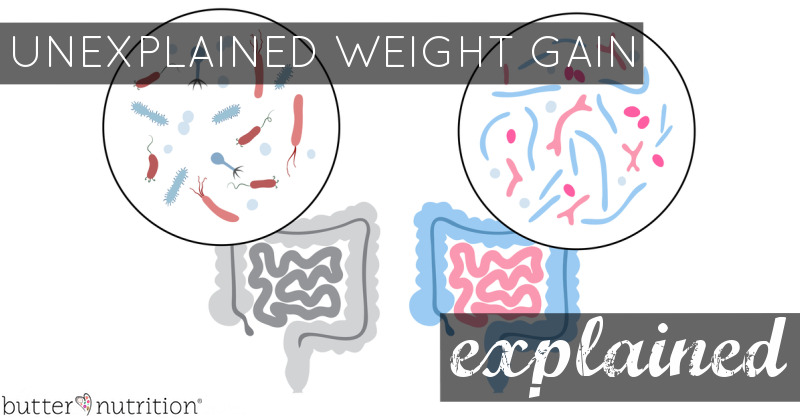
Today we're diving in to explain some reasons for unexplained weight gain, and they all come from the gut (with or without gut symptoms).
So if you feel like you're experiencing unexplained weight gain, look for these markers in your GI Map test, so you can address any imbalances and support your microbiome appropriately.
Let's get started!
1) Low Akkermansia Muciniphila
Akkermansia Muciniphila (A. muciniphila) is a mucin-degrading bacterium naturally found in the human gut that is associated with obesity, diabetes, inflammation, and metabolic disorders. [1]
According to a 2017 study, "Since its discovery in 2004 by Derrien et al. (2004), A. muciniphila has quickly become a popular research topic due to its newly discovered probiotic properties. The bacterium is more abundant in the gut of healthy subjects than in that of diabetic and obese patients and patients with bowel diseases and metabolic disorders. Recent intervention studies also confirmed an inverse correlation of A. muciniphila abundance with body weight, inflammation, metabolic syndrome, and both type 1 diabetes and type 2 diabetes. Collectively, the increasing body of evidence from animal and human studies suggest that A. muciniphila is a highly promising probiotic, especially its potential for the prevention and treatment of diabetes, obesity, and their associated metabolic disorders, which is of great interest for future research and development." [1]
And the good news? A. muciniphila can be increased through dietary interventions such as polyphenols, specific probiotics containing specific Lactobacillus and Bifidobacterium strains, sodium butyrate as well as prebiotic foods like inulin. [2]
2) High Firmicutes to Bacteroidetes Ratio
Research over the last few decades has identified certain human gut microbiota or "fatbugs" that can increase the caloric energy harvest from the foods you eat.
Bacteroidetes and Firmicutes bacteria are two classifications of gut flora that are used to characterize the composition of the microbes in your gut.
Research has found a high ratio of Firmicutes "fatbugs" to Bacteroidetes "thinbugs" (F/B ratio) in obese subjects when compared to the F/B ratio of lean subjects. They also saw that as obese subjects lost weight, the F/B ratio decreased.
If your high F/B ratio is too high, studies suggest decreasing fat intake while using certain probiotics, prebiotics and glutamine to help modulate Firmicutes: Bacteroidetes balance. [3,4,5]
3) High Beta-Glucuronidase (hinting at estrogen issues)
High beta-glucuronidase is a dead giveaway for estrogen dominance-related weight gain.
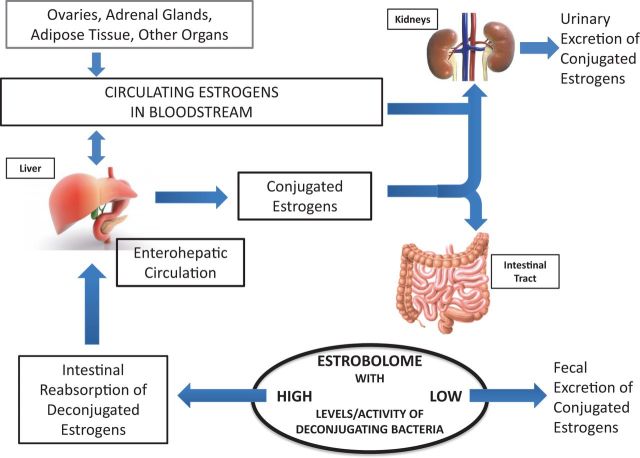
You see, an imbalance of gut bacteria (called gut dysbiosis) can cause estrogen dominance through the re-circulation of estrogens. This is because certain types of gut bacteria produce beta-glucuronidase enzymes that can re-activate (or deconjugate) estrogens that were already detoxified (conjugated) and on their way out of the body. Decreasing levels of beta-glucuronidase enzyme producing bacteria in your gut is the key to stopping the cycle of estrogen recirculation. [6]
Typical signs of estrogen dominance are weight gain, hair loss, edema, infertility, varicose veins, mood swings and depression around cycle time, breast tenderness, variations or skipped cycles, vaginal dryness or itchiness, excessive or scanty blood flow during period, cyclic insomnia, night sweats and fatigue. Read more on the topic of estrogen dominance here.
And if you're already dialed into your gut bacteria, hint - the major beta-glucuronidase producing bacteria are Bacteroides fragilis, Bacteroides vulgatus, Bacteroides uniformis, Clostridium paraputrificum, Clostridium clostridioforme, Clostridium perfringens, Escherichia coli, Eubacterium, Peptostreptococcus, Ruminococcus and Staphylococcus.
GI Map Testing is Invaluable
My go-to test that includes markers for all three of these (and more!) is the GI Map Test. While it's not the cheapest test (around $400 and considered "out of network" by insurance companies) keep in mind it is a stool test that is looking at gastrointestinal microbiota DNA. I have found the clinical value of this test to be priceless in my tough client cases.
The GI Map test is one that is shipped straight to your door and you can complete in the comfort of your own home. The kit includes 2-day return shipping back to the lab. Results take about 2 weeks to process from mailing date.
Looking at the gut helps us get to the root cause of common everyday symptoms. I hope this gives you more insight into possible causes of weight gain with or without gut symptoms.
PIN IT:
References:
- https://www.ncbi.nlm.nih.gov/pmc/articles/PMC6223323/
- https://pubmed.ncbi.nlm.nih.gov/31336737/
- https://www.ncbi.nlm.nih.gov/pmc/articles/PMC5933040/
- https://www.ncbi.nlm.nih.gov/pmc/articles/PMC4644874/
- https://www.diagnosticsolutionslab.com/sites/default/files/gi-map-white-paper_2.pdf
- https://www.ncbi.nlm.nih.gov/pmc/articles/PMC5017946/

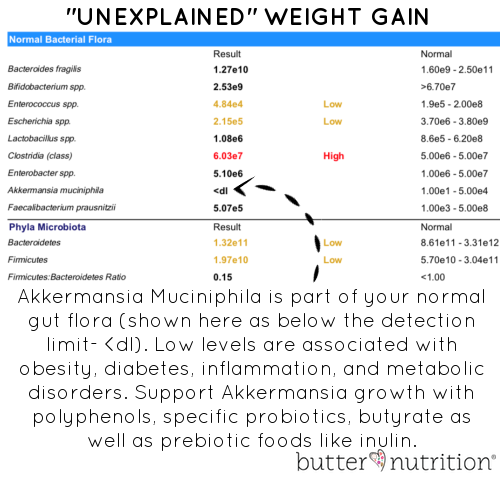
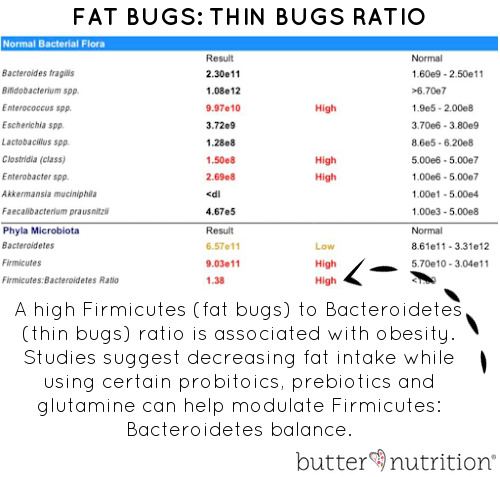
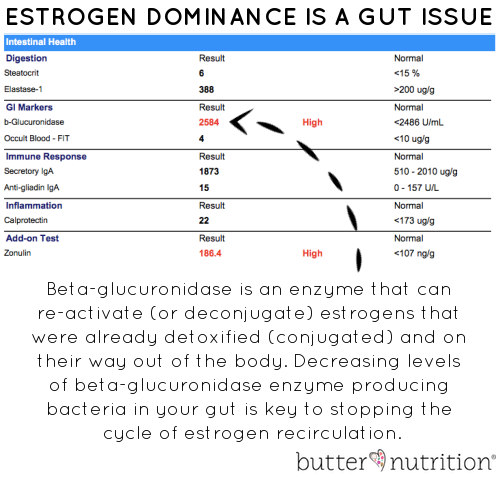
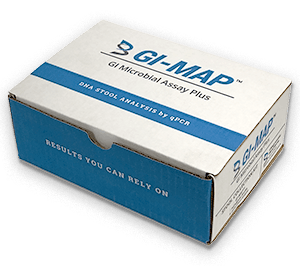
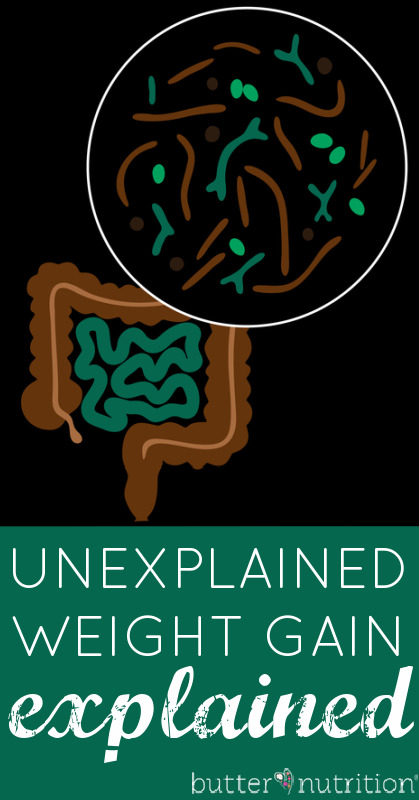
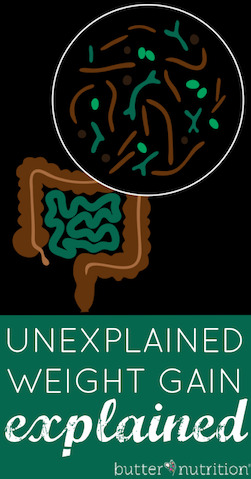





Soniya
I love how you have explained everything. Weight gain can happen for so many reasons. I tried the Wheatgrass juice by Kapiva and it has helped me in my weight loss journey.
Rashmi
Very informative article. Never knew about these reasons.
Vasara
Hey Catherine,
Super informative post. Apart from these scientific reasons, eating when bored, or binging, or overeating are the biggest reasons to gain inadequate weight. Change in the nutrition is very first step in the process of weight loss. For a healthier gut, I use only wooden pressed oils in my diet.
Thanks for sharing <3